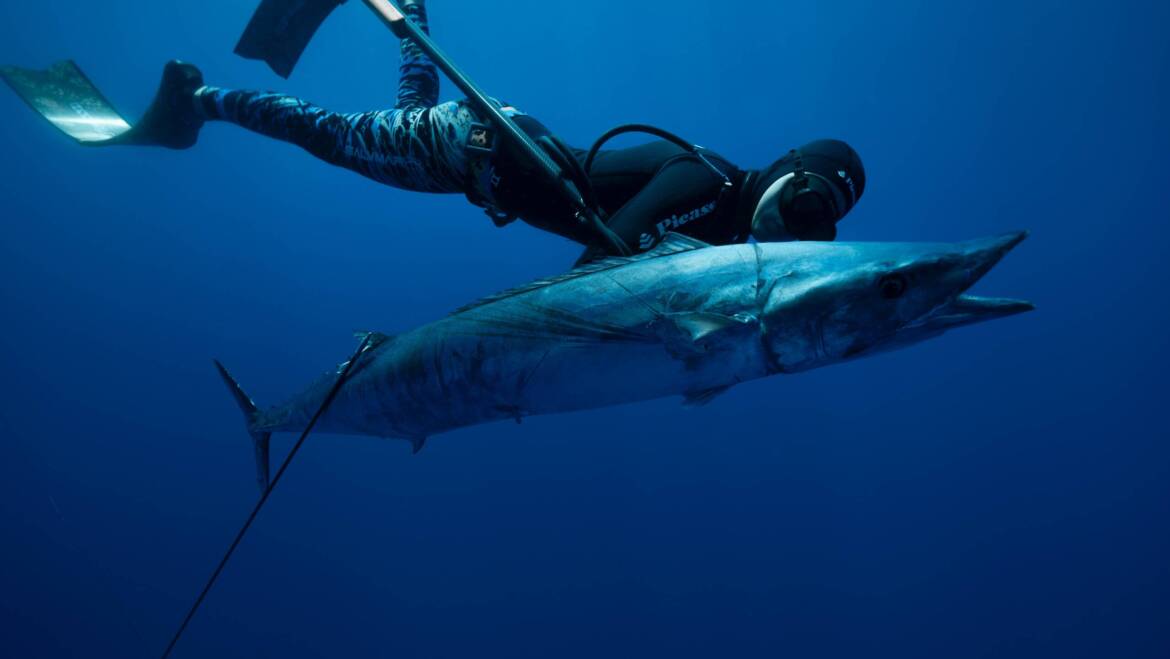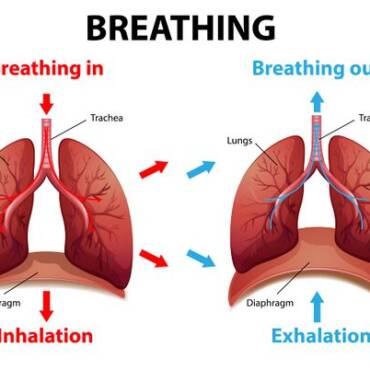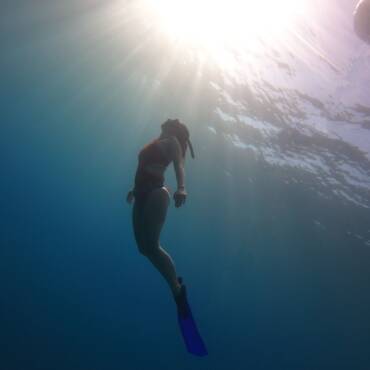Spearfishing is one of the oldest fishing techniques.
It involves using handheld tools like spears, gigs, or harpoons to impale fish, and has been used for thousands of years in artisanal fishing worldwide.
Early civilizations were well-acquainted with the practice of spearing fish in rivers and streams using sharpened sticks.
If you’re new to spearfishing, you’ll want to get up to speed with familiar with gear, technique, and safety.
Spearfishing Gear:
You’ll need a few essentials.
Mask and Snorkel:
Mask – Fit and visibility are most important. Choose one that sticks firmly to your face, while giving you good visibility at all angles.
Opt for a low-profile mask that minimizes the amount of trapped air. This will make dealing with the pressure difference underwater easier.
Snorkel – the simplest “J” shaped snorkel will do. Don’t use purge valves – they make bubbles and alert the fish to your presence.
Fins:
The right fins can help you move faster and conserve energy under water.
Go for plastic fins if you’re just starting out or are new to freediving. They’re cheaper than the fiberglass or carbon variety, are durable and almost unbreakable.
However, when it comes to power, plastic fins take a beating. In contrast, high-quality fiberglass and carbon materials require much less energy to operate. The downside is that they come with a steeper price.
Spearfishing Wetsuit:
Pay attention to the thickness of the wetsuit. Typically, for brief and warm-water dives, a wetsuit with a 1.5 mm thickness should suffice. It’s advisable to choose a wetsuit that allows you to blend in with your underwater surroundings (You don’t want the fish noticing you 🙂)
Spearfishing Knife:
The knife’s tip is the most significant part. It must be sharp enough to easily penetrate while being thick enough not to snap when twisted.
The bladed side is for general cutting and gutting your catch.
In an emergency, the serrated side is mostly utilized for cutting line, rope, and nets. It is more effective at cutting those materials over the bladed side and is an important attribute to look for when selecting a new knife.
Weight belt:
When it comes to weight belts, you’ll find various materials to choose from, each with its own advantages and considerations.
Rubber Weight Belts: These are often the preferred choice for spearfishers due to their durability and stability.
They stay securely in place, ensuring your weights won’t shift during your dive. If you’re looking for a long-lasting option, consider investing in a rubber weight belt with a stainless steel buckle.
Silicone Weight Belts: Silicone offers elasticity and durability, making it a solid choice.
It has a bit more flexibility than rubber and can withstand the effects of UV and saltwater exposure exceptionally well.
Webbing Weight Belts: If you’re on a budget, webbing weight belts are a more economical option.
However, it’s worth noting that weights on webbing belts may be prone to shifting as they lack the grip that rubber or silicone provides. This can be a consideration, particularly for beginners.
Your choice of material ultimately depends on your personal preferences, budget, and how you intend to use it. Consider the factors that matter most to you when selecting the right weight belt for your spearfishing adventures.
I’ll discuss technique and safety in subsequent posts.
Go here to read about why it’s important to learn freediving before joining a spearfishing course.
Note: Image by Michael Worden on Unsplash.





Add Comment